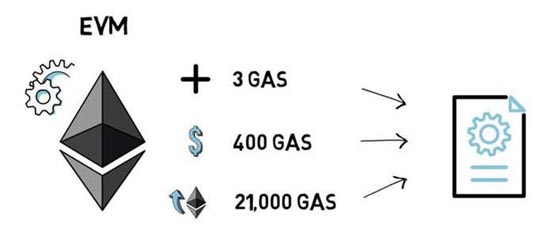php editor Yuzai will give you a detailed analysis of the gas cost calculation method. Gas is the fee used to execute smart contracts and transfers in the Ethereum network. The calculation method depends on the complexity of the transaction and the degree of network congestion. This article will introduce the concept of gas, calculation methods and how to optimize gas costs to help readers better understand and rationally utilize gas.

The gas price itself does not directly determine the cost of a certain transaction. To calculate transaction fees, we need to multiply the gas amount by the gas price. The gas price unit of Ethereum is usually gwei, and 1 gwei is equivalent to 0.000000001 ETH. Assuming the current price of Ethereum is $1,800, 1 ETH is equal to 1e18 wei (1 billionth of an ETH). If we want to send a simple Ethereum transaction, we need to consider the gas consumption as well as the current gas price. By multiplying the gas amount by the gas price, we can calculate the actual transaction cost. At an ETH price of $1,800, we can use this data to determine the fee we need to pay to send a transaction.
Most popular Ethereum wallets estimate the necessary gas price and allow us to choose between fast, medium and slow transaction confirmation speeds. Let's assume that if we want to confirm our transaction within a minute, the wallet estimates the gas price will be set to 100gwei (if you want a faster transaction, the gas fee will be more expensive), and we will send the gas cost of a transaction (21,000 gas) multiplied by the gas price (100gwei), it equals 2,100,000 gwei, which is 0.0021 ETH. When the ETH price was $3,800, the transaction fee was $7.98. The amount of ETH consumed = transaction fee = the amount of gas consumed for each transaction * gas price.
Gas fees will rise and fall for the following reasons:
1. Ethereum increases the block gas limit. Every time Ethereum increases the block gas limit, the gas fee will decrease;
2. The Ethereum chain is very prosperous. Gas fees are affected by the needs of the blockchain. In order to package your transactions as quickly as possible, you need more gas fees. A large number of transactions are competing, and miners give priority to transactions with the highest gas prices. Therefore, as activity on the Ethereum blockchain increases, gas usage will also increase. The increase in gas fees indicates that there is active activity on the Ethereum chain, and users are increasing their gas fees to complete transactions.
3. The Ethereum chain is getting more and more congested. The fundamental reason for the increase in Gas fees is that the Ethereum network utilization rate continues to increase and is in a state of severe congestion. Ethereum network utilization is increasing because user activity is too active, but it is also becoming increasingly congested. For example, if a famous project on Ethereum is launched and triggers a rush to buy, gas fees will skyrocket instantly. At around 0:00 on August 20 this year, the Ethereum gas fee instantly soared to more than 2,400 Gwei. This was because the sale of an NFT project called "0n1Force" triggered a rush to buy.
The above is the detailed content of This article explains in detail how to calculate gas costs.. For more information, please follow other related articles on the PHP Chinese website!